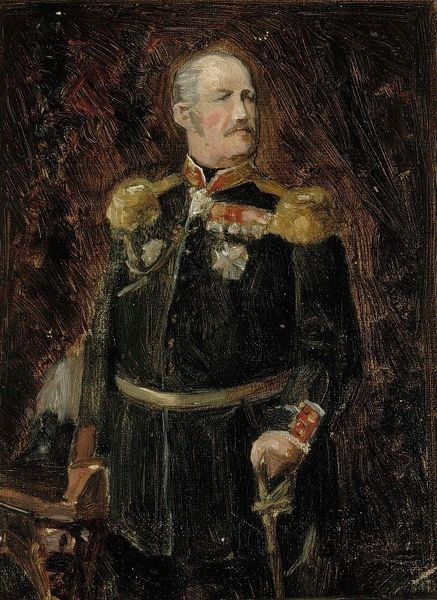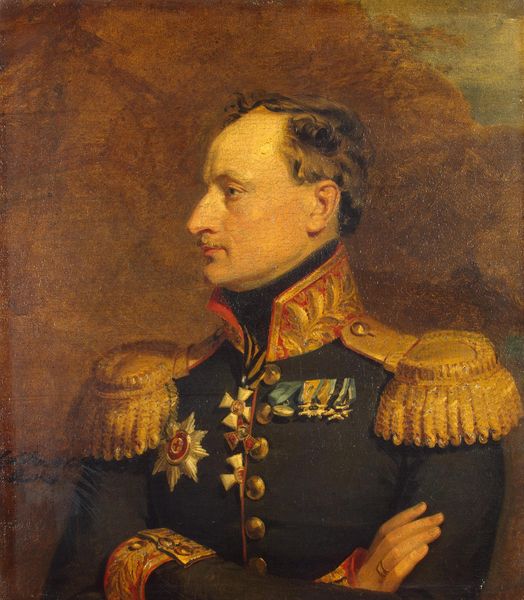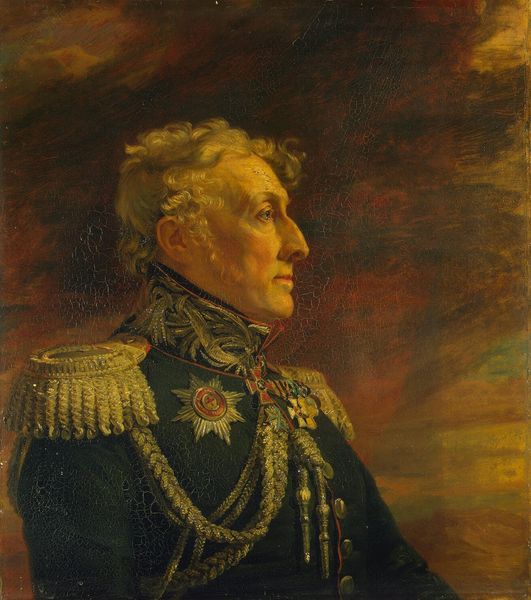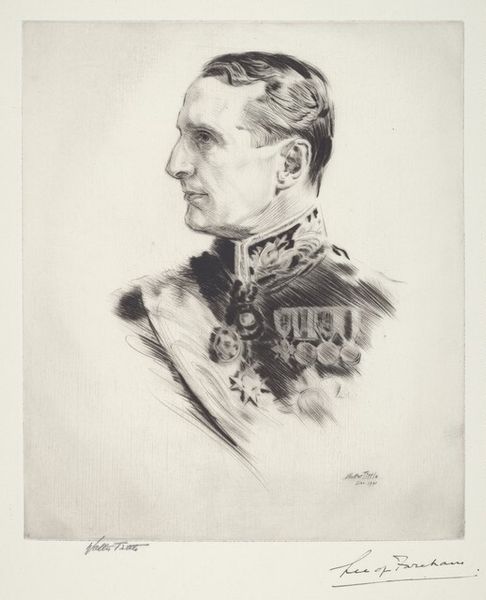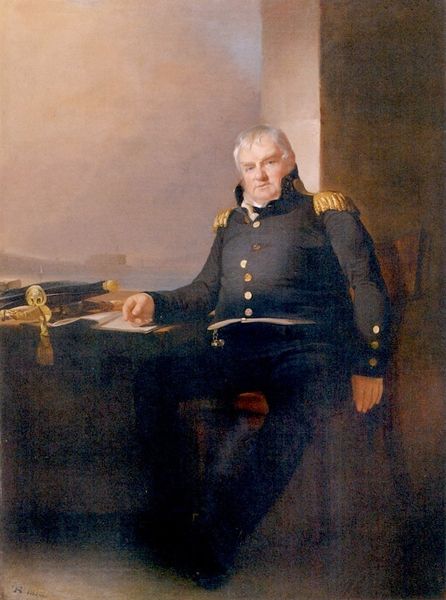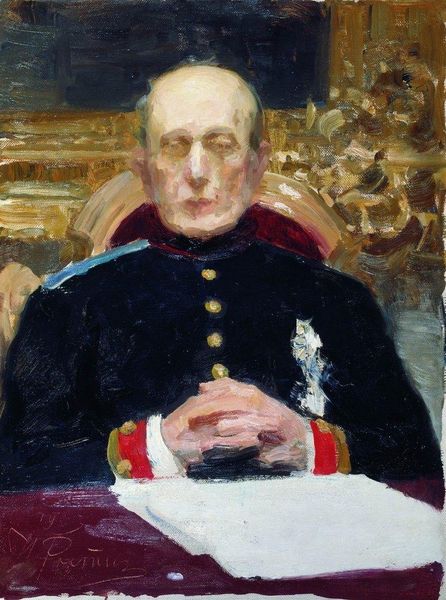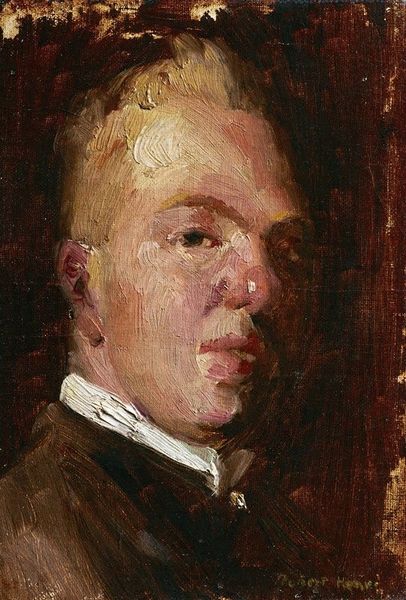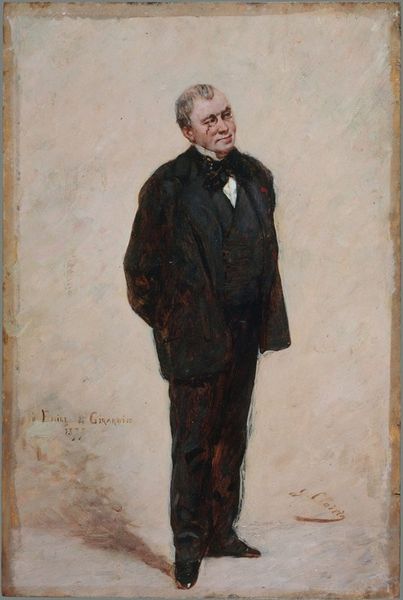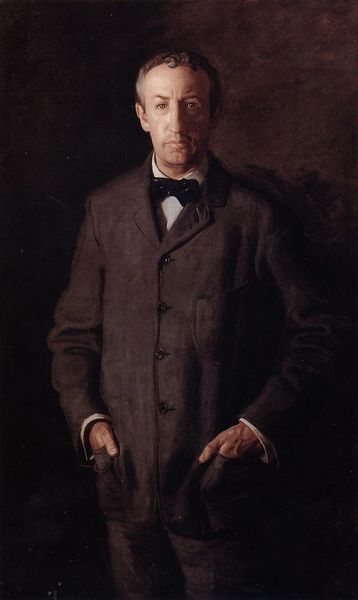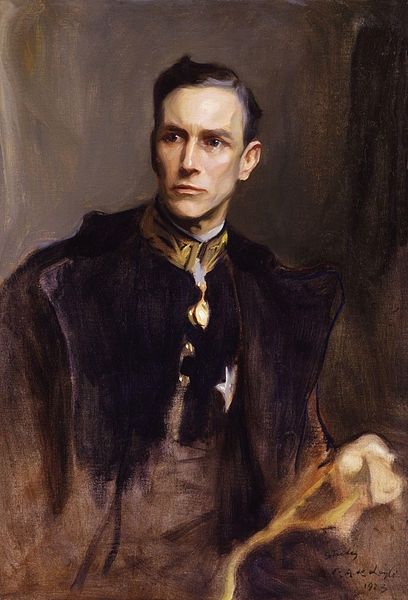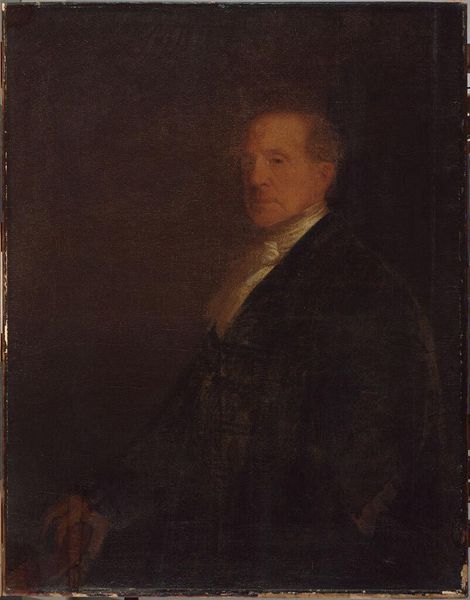
Copyright: Public Domain: Artvee
Curator: Looking at this portrait, my immediate impression is one of stark austerity, a very reserved depiction of power. Editor: Indeed. Here we have Franz von Lenbach's 1886 portrait of Helmut Graf von Moltke, a prominent Prussian military figure. This oil painting embodies the style of realism while hinting at the romantic idealization of its subject. Curator: The realism is undeniable, especially in rendering the texture of his uniform and the age evident in his face. Yet, the background feels almost unresolved, directing all attention to the General. It appears von Lenbach used a muted palette, focusing on material representation. How was this received by the Prussian elite? Editor: Given Moltke's pivotal role in shaping 19th-century military strategy and the unification of Germany, such portraits played a key role in establishing a national narrative. They reinforced a specific image of leadership, linking the individual to the socio-political objectives of the state. These portraits legitimized the political hierarchy. Curator: That speaks volumes about the artwork's function, but let's return to materiality. Considering the production costs of oil paint and the canvas, commissioning this piece clearly marked the patron as a symbol of affluence, not just visually, but also materially through acts of consumption and status display. What specific role did Lenbach occupy in perpetuating such class divisions? Editor: Lenbach was, by this time, the de facto portraitist of the German elite, a status born of his stylistic flexibility but also his acute understanding of his clients' political goals. These paintings circulated amongst powerful families and in governmental buildings, acting as reminders of status and contributing to the perceived order of society. Curator: So we have a painting operating on two distinct but linked levels, visually depicting and materially enacting existing power structures. Thank you for providing insight into the wider context. Editor: The painting really shows how carefully cultivated the imagery of power can be. A reminder that images are rarely neutral.
Comments
No comments
Be the first to comment and join the conversation on the ultimate creative platform.
